The Penguin Jazz Guide: The 1001 Best Albums | reviews, news & interviews
The Penguin Jazz Guide: The 1001 Best Albums
The Penguin Jazz Guide: The 1001 Best Albums
New, slimmed-down, selective compendium should win new fans
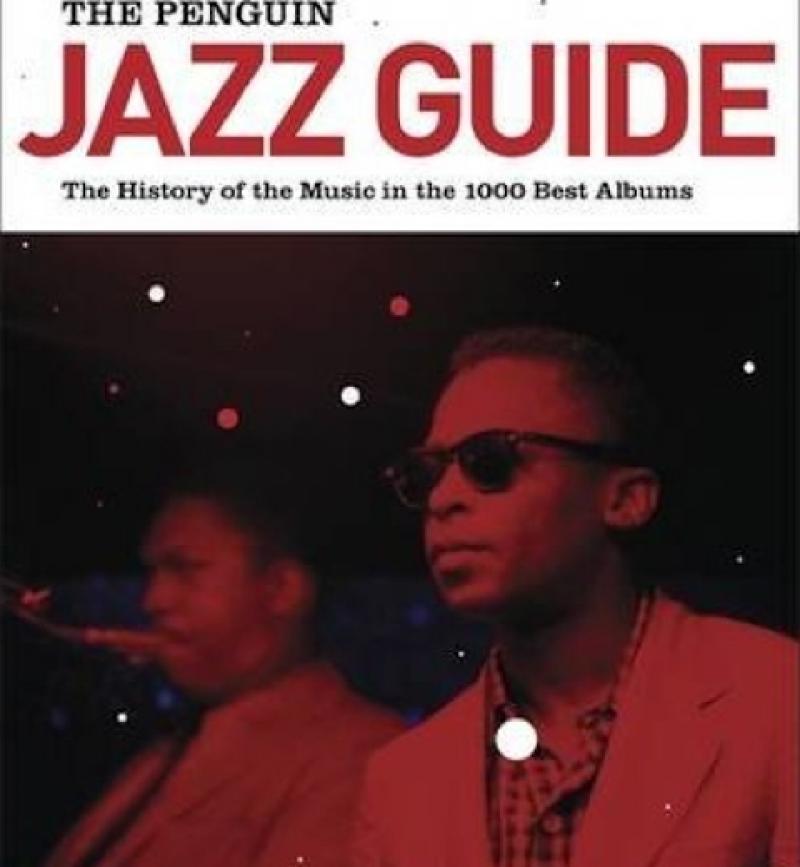
It's a curious fact that, for whole swathes of the music-buying public, their jazz collection has never grown beyond the ubiquitous Kind of Blue. OK, it's a seminal masterpiece which continues to sell like shovels in a snow storm. But why stop there?
Published in 2008, the previous edition of the guide (then called The Penguin Guide to Jazz Recordings) clocked in at a whopping 1,600-plus pages. With something in the region of 14,000 CDs reviewed, this was clearly not a tome that was going to make it onto anyone's holiday reading list. So, having become as big as it could possibly get, was the change in format – the new edition is a trim 800 pages – imposed by the publisher or a mutual decision?
“It was something that I proposed,” the book's author, Brian Morton, tells me on the phone from his home in the west of Scotland. “When we put the first edition out 20 years ago, it was possible to say – with a few exceptions – that we covered just about everything that was commercially available. By the time we got to the third edition, with the proliferation of CD releases in particular, it was getting very difficult to keep up with everything that was coming out, even with two of us listening pretty obsessively. When you get to the fifth and sixth editions they're absolutely massive books, as big as a paperback can be without exploding in your lap. Even then, we were getting letters from people running jazz labels in Krakow and Zagreb saying, 'You haven't covered any of our stuff.'"
The "two of us" refers to Morton's erstwhile co-editor Richard Cook, who sadly succumbed to cancer in 2007. The new edition remains a work of joint authorship, however, with Cook having originally penned many of the reviews.
Ditching the alphabetical organisation of previous editions in favour of a chronological approach, the guide takes you on a journey from the very first jazz recordings made in 1917 right up to last year's For The Love of You (“a lyrical masterpiece”) by US vibes player Joe Locke. This makes sense, although the lack of an index means that you're forever thumbing through the contents pages to find this or that recording. Another change sees the star-rating system abandoned, which must have been a blessing.
“Absolutely. A three-star Louis Armstrong record is not the same phenomenon as a three-star Steve Lehman or Vijay Iyer record. The tariff is different. You have to look at the star rating within the entry as well as across the entry. It just becomes a muddle.” Agreed, and yet I have to confess a sneaking regard for the way the seriously sub-par recordings were described in the previous edition: One star - Confiscate their instruments.
As Morton duly notes in the preface, any changes in format won't concern newcomers to the book. Reading between the lines, this suggests he may be preparing to don a tin hat to protect against the critical barbs of the guide's long-standing devotees. But the kind of people who may get hot under the collar are already aficionados: they know every outtake Charlie Parker recorded, can tell you who played bari sax on Charles Mingus's The Black Saint and the Sinner Lady, and can quote you the text printed on the sleeve of John Coltrane's A Love Supreme verbatim. The hope is, surely, that by restricting the vast world of jazz recordings to 1,001 Best Albums – any one of which is worth investigating – the book will attract new listeners to the music. Jazz was, is, and will continue to be one of the most creative and innovative genres - let's get it out there. Morton, for his part, seems fairly sanguine about any backlash.
“I'm not worried about it. This book has to be seen in a number of contexts: first of all, this is really the first edition since Richard's death. It's also the 10th edition and, however spurious these things are, it's a round number and a big number and we all felt it would be nice to do something different. And it falls flat bang in the middle of a pretty rocky time financially, so there was some interest in a cheaper book. Not a fudged book, or a budget version - something scaled down but still qualitatively up with the others.”
Apart from the price, an absolute steal at a recession-busting £20, the new edition also scores heavily with the addition of insightful anecdotes from the musicians themselves, which add welcome local colour.
“It was something that Penguin were initially a bit resistant to. They rightly pointed out that while I could write to Steve Lehman and ask him how things were in the studio that day, I couldn't write to Charlie Parker. But as I pointed out to them in turn, this is a music that is still less than 100 years old as far as recording is concerned. There are always people who were there who are still alive.”
Just the thought of whittling down a massive 14,000 recordings to a mere 1,001 makes me break out in a cold sweat, and I had visions of Morton agonising over every decision about which recordings did, or didn't, make the cut. Not so, it seems.
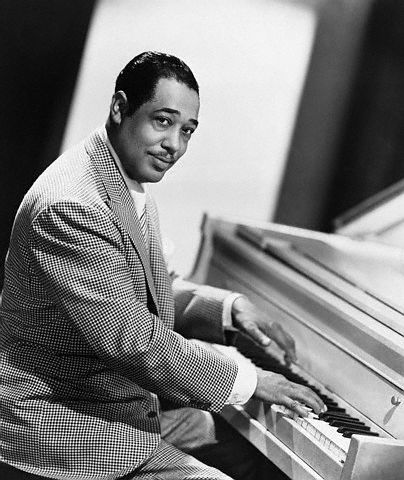 “Well, it's funny. I've always said there are three bands of priority in the book. There are those artists without which you could not legitimately publish it - Armstrong, Ellington (pictured right), Monk, Basie, Parker – you would probably come up with exactly the same names as I would. There's a big middle ground of – I would never think of them as second-order musicians – not pioneers, let's say; the kind of people who make up the body of the music. And then, inevitably, there has to be an area below that which is down to personal choice and preference, and it's in that area where – you talked about putting on the tin hat - we did get letters from people saying, 'It is an outrage that x is in and y is not.' So it wasn't actually as difficult as you might think, up to the last 10 or 15 years. Then it does become more of an issue when you're dealing with contemporary music which you are ostensibly giving co-status with Sidney Bechet, Duke Ellington, Charlie Parker, Thelonious Monk, whatever. I think that is potentially contentious.”
“Well, it's funny. I've always said there are three bands of priority in the book. There are those artists without which you could not legitimately publish it - Armstrong, Ellington (pictured right), Monk, Basie, Parker – you would probably come up with exactly the same names as I would. There's a big middle ground of – I would never think of them as second-order musicians – not pioneers, let's say; the kind of people who make up the body of the music. And then, inevitably, there has to be an area below that which is down to personal choice and preference, and it's in that area where – you talked about putting on the tin hat - we did get letters from people saying, 'It is an outrage that x is in and y is not.' So it wasn't actually as difficult as you might think, up to the last 10 or 15 years. Then it does become more of an issue when you're dealing with contemporary music which you are ostensibly giving co-status with Sidney Bechet, Duke Ellington, Charlie Parker, Thelonious Monk, whatever. I think that is potentially contentious.”
Ellington, one of the music's canonic figures who features strongly in the guide with a total of seven recordings, is described within its pages as “the encyclopaedist of jazz, or its lexicographer. There are few aspects of the music which are not laid out, or adumbrated, in his half-century of activity.” Reviewing Ellington's The Far East Suite, alto saxist Johnny Hodges's solo on “Isfahan” is memorably described as “like attar of roses, once smelt, impossible to forget”. And has anyone ever bent a note more seductively?
![]() Duke Ellington, "Isfahan" (The Far East Suite)
Duke Ellington, "Isfahan" (The Far East Suite)
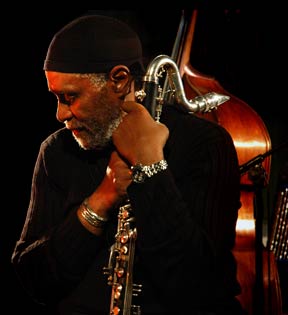 Alongside the foundation stones of the music, one of many overlooked gems which the guide brings to the fore is The Jewel in the Lotus by Bennie Maupin (pictured left). Best known for his atmospheric bass clarinet work on Miles Davis's Bitches Brew and Herbie Hancock’s Head Hunters, Maupin's debut as leader is described as a record that “steals into the room and leaves again without introductions, but without attempting to be pointlessly enigmatic”. Featuring Hancock on piano, and at his most rhapsodic, the album's “Past + Present = Future” is a two-minute vignette of iridescent, oceanic eloquence.
Alongside the foundation stones of the music, one of many overlooked gems which the guide brings to the fore is The Jewel in the Lotus by Bennie Maupin (pictured left). Best known for his atmospheric bass clarinet work on Miles Davis's Bitches Brew and Herbie Hancock’s Head Hunters, Maupin's debut as leader is described as a record that “steals into the room and leaves again without introductions, but without attempting to be pointlessly enigmatic”. Featuring Hancock on piano, and at his most rhapsodic, the album's “Past + Present = Future” is a two-minute vignette of iridescent, oceanic eloquence.
![]() Bennie Maupin, "Past + Present = Future" (The Jewel in the Lotus)
Bennie Maupin, "Past + Present = Future" (The Jewel in the Lotus)
Vocalists, maligned by certain critics as being in some way inferior to their instrumental counterparts - and yet often providing a way into the music for many listeners - also get their due, including a very select group of UK singers that comprises Norma Winstone, Tina May, Claire Martin and Ian Shaw. And when it comes to naming “the greatest jazz singer of them all”, there's absolutely no sitting on the fence, a vocalist who “sang note-perfect improvisations with a sense of time almost unequalled by any comparable instrumentalist”: Ella Fitzgerald (pictured below right). Her Sings The Cole Porter Songbook should be at the top of any aspiring jazz singer's listening pile.
![]() Ella Fizgerald, "Too Darn Hot" (Sings The Cole Porter Songbook)
Ella Fizgerald, "Too Darn Hot" (Sings The Cole Porter Songbook)
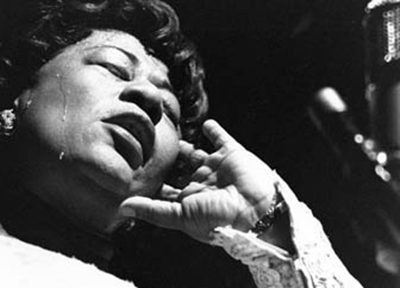 While the current darlings of the British scene - Empirical, Portico Quartet, Troyka, Led Bib - are conspicuous by their absence (Polar Bear's Dim Lit does sneak in), it's a delight to see the inclusion of Django Bates's Summer Fruits (And Unrest), the first part of his uniquely rewarding "Four Seasons" cycle. A word of warning: Bates (pictured below left) likes playing rhythmic games of a Stravinskian complexity. Listening to “Food for Plankton” could permanently rewire your synapses.
While the current darlings of the British scene - Empirical, Portico Quartet, Troyka, Led Bib - are conspicuous by their absence (Polar Bear's Dim Lit does sneak in), it's a delight to see the inclusion of Django Bates's Summer Fruits (And Unrest), the first part of his uniquely rewarding "Four Seasons" cycle. A word of warning: Bates (pictured below left) likes playing rhythmic games of a Stravinskian complexity. Listening to “Food for Plankton” could permanently rewire your synapses.
![]() Django Bates, "Food for Plankton" (Summer Fruits (And Unrest))
Django Bates, "Food for Plankton" (Summer Fruits (And Unrest))
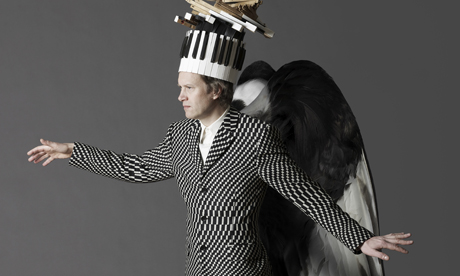 Much more controversial than the "who's in, who's not" game is the author's stance on US versus European jazz. Anyone, Morton states in the preface, who argues that the centre of gravity in jazz has switched from the US to Europe “is either parti pris or else deluded. America, and particularly the great metropolitan centres – New York, Chicago, Los Angeles – remain the crucible of much that is vital and innovative in the music. European, Asian, African and Australasian contributions are important and welcomed, but they are still essentially footnotes to the main drama and will remain so for the conceivable future.” Some of my fellow Jazzwise scribes would express quite the opposite viewpoint – that the US tradition has ossified and that the real innovation is taking place in Europe. Is the author being deliberately provocative, or is this a genuinely held opinion?
Much more controversial than the "who's in, who's not" game is the author's stance on US versus European jazz. Anyone, Morton states in the preface, who argues that the centre of gravity in jazz has switched from the US to Europe “is either parti pris or else deluded. America, and particularly the great metropolitan centres – New York, Chicago, Los Angeles – remain the crucible of much that is vital and innovative in the music. European, Asian, African and Australasian contributions are important and welcomed, but they are still essentially footnotes to the main drama and will remain so for the conceivable future.” Some of my fellow Jazzwise scribes would express quite the opposite viewpoint – that the US tradition has ossified and that the real innovation is taking place in Europe. Is the author being deliberately provocative, or is this a genuinely held opinion?
“Both. Quantitatively, there's far more going on in the US - it's still an American music in terms of its GNP. Qualitatively, I think there is an interesting argument to be made, but I haven't seen or heard the evidence for it.”
That's an argument for another day. In the meantime, for those readers whose copy of Kind of Blue stands forlornly on the shelf – you know who you are - let's not talk about dipping our toes here. Buy the guide and jump in, the water's lovely.
Any copyrighted material on this page is included as "fair use", for the purpose of study, review or critical analysis only, and will be removed at the request of the copyright owner(s).
Explore topics
Share this article
Add comment
The future of Arts Journalism
You can stop theartsdesk.com closing!
We urgently need financing to survive. Our fundraising drive has thus far raised £49,000 but we need to reach £100,000 or we will be forced to close. Please contribute here: https://gofund.me/c3f6033d
And if you can forward this information to anyone who might assist, we’d be grateful.

Subscribe to theartsdesk.com
Thank you for continuing to read our work on theartsdesk.com. For unlimited access to every article in its entirety, including our archive of more than 15,000 pieces, we're asking for £5 per month or £40 per year. We feel it's a very good deal, and hope you do too.
To take a subscription now simply click here.
And if you're looking for that extra gift for a friend or family member, why not treat them to a theartsdesk.com gift subscription?
more New music
 Soulwax’s 'All Systems Are Lying' lays down some tasty yet gritty electro-pop
Belgian dancefloor veterans return to the fray with a dark, pop-orientated sound
Soulwax’s 'All Systems Are Lying' lays down some tasty yet gritty electro-pop
Belgian dancefloor veterans return to the fray with a dark, pop-orientated sound
 Music Reissues Weekly: Marc and the Mambas - Three Black Nights Of Little Black Bites
When Marc Almond took time out from Soft Cell
Music Reissues Weekly: Marc and the Mambas - Three Black Nights Of Little Black Bites
When Marc Almond took time out from Soft Cell
 Album: Mobb Deep - Infinite
A solid tribute to a legendary history
Album: Mobb Deep - Infinite
A solid tribute to a legendary history
 Album: Boz Scaggs - Detour
Smooth and soulful standards from an old pro
Album: Boz Scaggs - Detour
Smooth and soulful standards from an old pro
 Emily A. Sprague realises a Japanese dream on 'Cloud Time'
A set of live improvisations that drift in and out of real beauty
Emily A. Sprague realises a Japanese dream on 'Cloud Time'
A set of live improvisations that drift in and out of real beauty
 Trio Da Kali, Milton Court review - Mali masters make the ancient new
Three supreme musicians from Bamako in transcendent mood
Trio Da Kali, Milton Court review - Mali masters make the ancient new
Three supreme musicians from Bamako in transcendent mood
 Hollie Cook's 'Shy Girl' isn't heavyweight but has a summery reggae lilt
Tropical-tinted downtempo pop that's likeable if uneventful
Hollie Cook's 'Shy Girl' isn't heavyweight but has a summery reggae lilt
Tropical-tinted downtempo pop that's likeable if uneventful
 Pop Will Eat Itself's 'Delete Everything' is noisy but patchy
Despite unlovely production, the Eighties/Nineties unit retain rowdy ebullience
Pop Will Eat Itself's 'Delete Everything' is noisy but patchy
Despite unlovely production, the Eighties/Nineties unit retain rowdy ebullience
 Music Reissues Weekly: The Earlies - These Were The Earlies
Lancashire and Texas unite to fashion a 2004 landmark of modern psychedelia
Music Reissues Weekly: The Earlies - These Were The Earlies
Lancashire and Texas unite to fashion a 2004 landmark of modern psychedelia
 Odd times and clunking lines in 'The Life of a Showgirl' for Taylor Swift
A record this weird should be more interesting, surely
Odd times and clunking lines in 'The Life of a Showgirl' for Taylor Swift
A record this weird should be more interesting, surely
 Waylon Jennings' 'Songbird' raises this country great from the grave
The first of a trove of posthumous recordings from the 1970s and early 1980s
Waylon Jennings' 'Songbird' raises this country great from the grave
The first of a trove of posthumous recordings from the 1970s and early 1980s

Comments
...
...